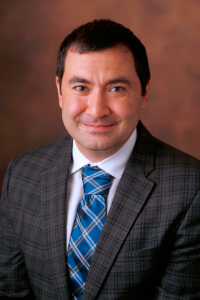Mikail Rubinov, assistant professor of biomedical engineering, computer science, psychiatry and psychology, has been awarded a four-year, $1.1 million grant from the National Institute of Mental Health to better understand the development and organization of brain networks, as well as their change in development and aging.
Rubinov and his collaborators will link aspects of gene expression and brain network phenotypes across several brain regions across many individuals. The ultimate goal of the work is to open new directions in personalized neuroimaging genomics.

The term “brain network” refers to interrelated brain areas associated with brain functions such as emotion, language and attention. Brain mapping initiatives have acquired large and comprehensive datasets to study the organization of these networks. This work has advanced our understanding of brain function but left critical gaps in the individual variation of this function at the level of gene expression.
These gaps can be filled using increasingly large datasets, which are becoming more available, as well as the team’s complementary and varied expertise in network and cognitive neuroscience, computational biology and human evolution. “The diverse expertise of our team is a key strength of the Vanderbilt environment that has made this project possible,” said Rubinov, also a faculty affiliate of the Vanderbilt Brain Institute.
With his team, Rubinov will integrate several large and disparately acquired neuroimaging, genomic and gene-expression datasets from the Gene Tissue Expression Project, the Human Connectome Project, the UK Biobank, the Adolescent Brain Cognitive Development Study and the Cambridge Centre for Ageing and Neuroscience.
Initially, the team will apply models of heritable gene expression to this large-scale neuroimaging genomic data to identify links between this heritable expression and brain-network phenotypes across several key brain regions. Then researchers will use ancient DNA from archaic hominins to identify selective pressures on genes associated with brain network phenotypes.
The results of this investigation will allow the team the chance to distinguish between adaptive and nonadaptive brain network phenotypes. Ultimately, and with these two foundational elements, the team will consider the relationship between heritable gene expression and brain network characteristics across development and aging.
The software and results from this work will be freely distributed. “By freely distributing these tools, we hope to help accelerate future research at the interface of neuroimaging analysis and computational genomics,” Rubinov said.
Other researchers on the project include Tony Capra, Bennett Landman, Eric Gamazon, Neil Woodward, Dr. Paul Newhouse and Simon Fisher.